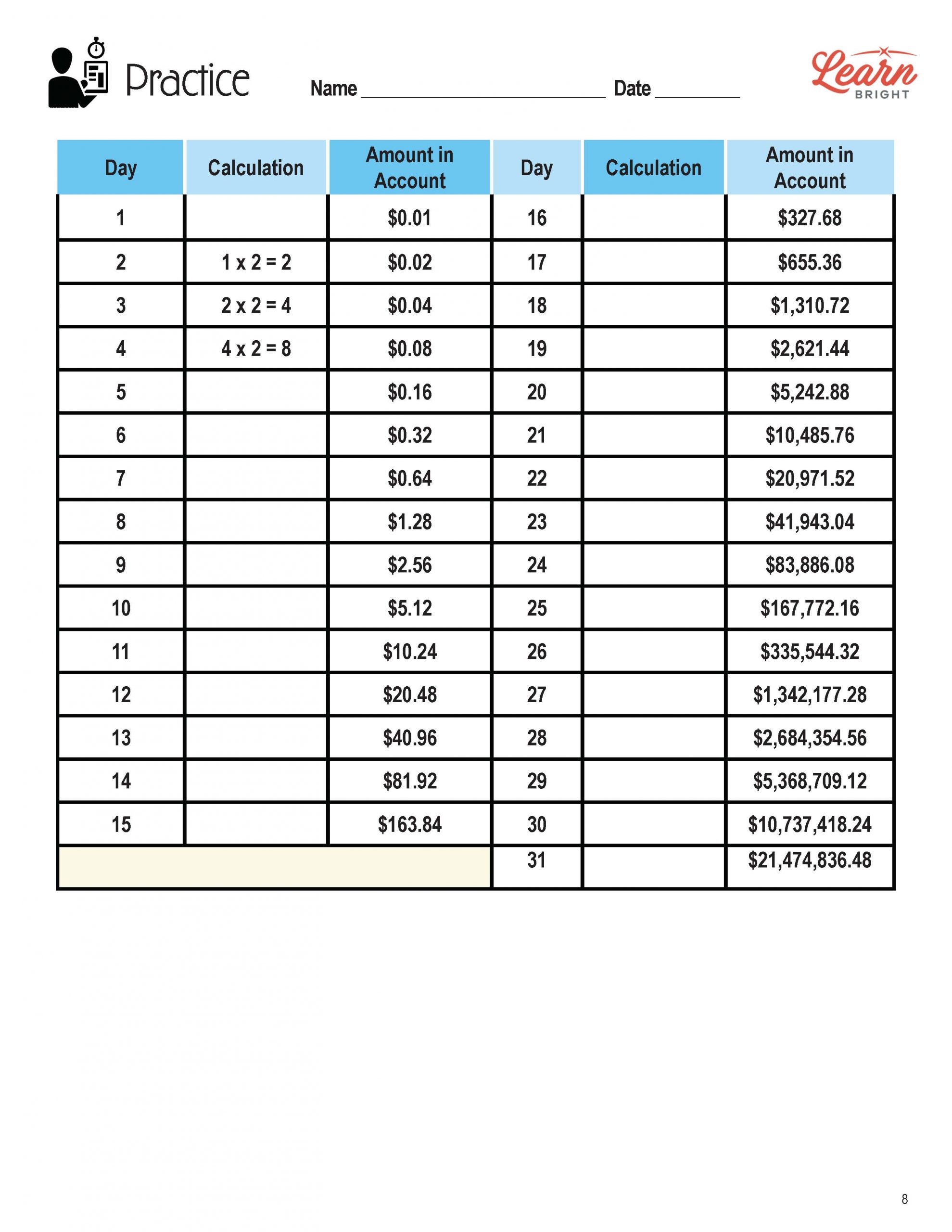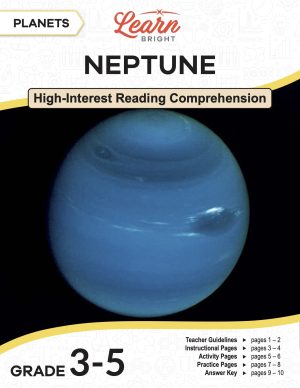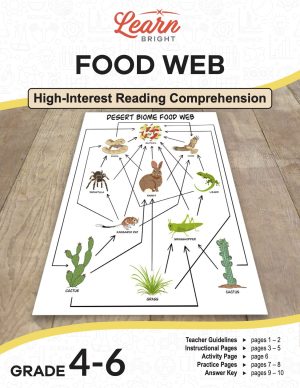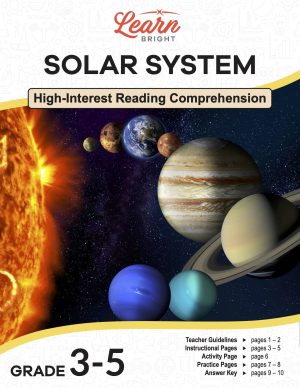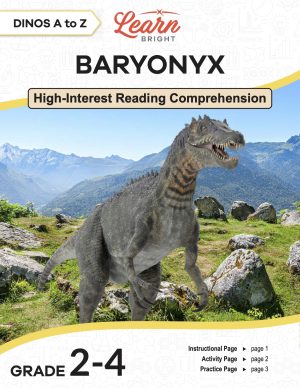Description
What our Compounding Interest: Advanced Lesson lesson plan includes
Lesson Objectives and Overview: Compounding Interest: Advanced Lesson teaches students all about compounding interest, including what it is and how to calculate it. At the end of the lesson, students will be able to solve unit rate problems using compound interest. They will also be able to use a compound interest algorithm to solve problems. This lesson is for students in 6th grade.
Classroom Procedure
Every lesson plan provides you with a classroom procedure page that outlines a step-by-step guide to follow. You do not have to follow the guide exactly. The guide helps you organize the lesson and details when to hand out worksheets. It also lists information in the blue box that you might find useful. You will find the lesson objectives, state standards, and number of class sessions the lesson should take to complete in this area. In addition, it describes the supplies you will need as well as what and how you need to prepare beforehand. The supplies you will need for this lesson include marshmallows, pencils, pens, and scratch paper.
Options for Lesson
Included with this lesson is an “Options for Lesson” section that lists a number of suggestions for activities to add to the lesson or substitutions for the ones already in the lesson. One optional adjustment to this less is to focus more on the computation of the formula through more technical examples, letting students explore without penalty. You could also link this lesson to a financial lesson for students, having a financial professional come in and speak with the class about saving for retirement and compound interest. Finally, your students can explore and research interest rates paid on savings accounts in the local community.
Teacher Notes
The teacher notes page includes a paragraph with additional guidelines and things to think about as you begin to plan your lesson. This page also includes lines that you can use to add your own notes as you’re preparing for this lesson.
COMPOUNDING INTEREST: ADVANCED LESSON LESSON PLAN CONTENT PAGES
What is compound interest?
The Compounding Interest: Advanced Lesson lesson plan includes two pages of content. Compound interest is interest earned on the initial deposit, also known as the principal, plus any prior interest. It adds in the previous interest and pays interest on the total amount. We sometimes call this interest on interest!
What’s the difference between simple interest and compound interest?
Simple and compound interest are different. Simple interest grows over time, but slowly, because it’s only the interest on the principal. Compounding interest, on the other hand, grows faster, because both the principal and earned interest earn interest. It can compound daily, monthly, or yearly. Most banks today pay their customers compound interest.
How does it work?
Say you put $10,000 in a savings account with 5% compound interest. After one year, you would earn $500 in interest. After two years, you would have more than $1,000 in interest. And after three years, you would have earned more than $1,600 just by leaving the money in that account and not taking any out.
How do you calculate compound interest?
We calculate compound interest using a formula: A = P (1 + r/m)ᵐᵗ, where A is amount, P is principal, r is annual rate, m is times per year, and t is time in years.
The lesson includes two examples using the formula. In the first example, someone puts $100 in a savings account on their 12th birthday and leaves it there for 6 years at a 10% interest rate, compounded yearly. To figure out how much money she has in the account after 6 years, we use the formula: A = 100 (1 + 0.10/1)¹*⁶. When we solve, we find out A = $177.16.
COMPOUNDING INTEREST: ADVANCED LESSON LESSON PLAN WORKSHEETS
The Compounding Interest: Advanced Lesson lesson plan includes three worksheets: an activity worksheet, a practice worksheet, and a homework assignment. You can refer to the guide on the classroom procedure page to determine when to hand out each worksheet.
MARSHMALLOW ACTIVITY WORKSHEET
The activity worksheet asks students to complete the Marshmallow Challenge, in which they start with one marshmallow. If they haven’t eaten it after five minutes, they get another one to represent interest.
WORD PROBLEM PRACTICE WORKSHEET
For the practice worksheet, students will read the paragraph on the practice worksheet and solve the word problem.
COMPOUND INTEREST HOMEWORK ASSIGNMENT
The homework assignment asks students to use the compound interest formula to solve four problems.
Worksheet Answer Keys
This lesson plan includes answer keys for the activity worksheet, the practice worksheet, and the homework assignment. If you choose to administer the lesson pages to your students via PDF, you will need to save a new file that omits these pages. Otherwise, you can simply print out the applicable pages and keep these as reference for yourself when grading assignments.




